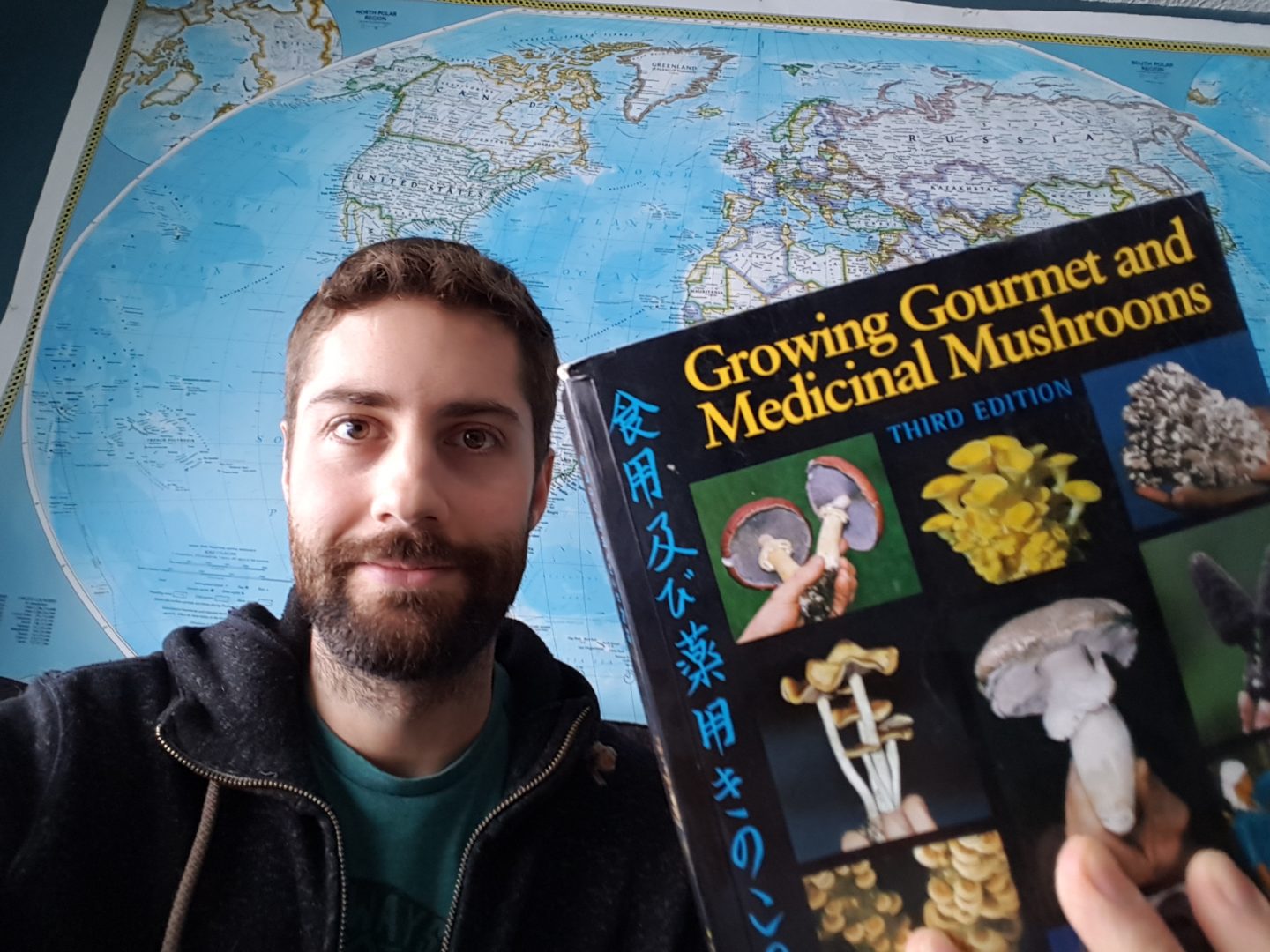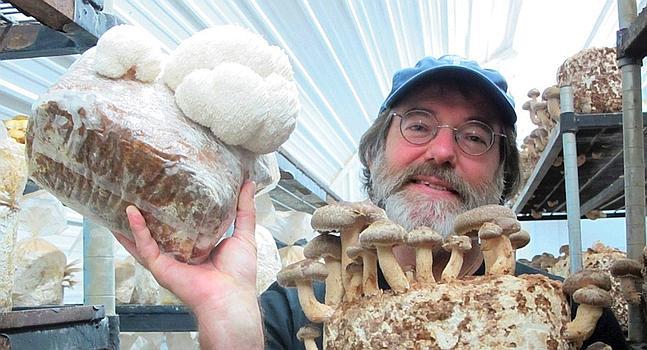Growing Blog
The Best Books on Mushroom Cultivation

To see further, we stand on the shoulders of giants. Knowledge is power. Why try to reinvent the wheel when we can learn from the failures, successes, and triumphs of others?
This applies to mushroom cultivation just the same. Every grower needs a few good mushroom books on their shelf.
Growing mushrooms is a complex and intricate process, and having a good book (or three) on mushroom cultivation makes the learning process so much less painful. Learning from the pros can save a lot of wasted time and money from failed experiments.
Believe me, I’ve been there.
So what are some of the best books on mushroom cultivation that can really help you along your journey to becoming a successful mushroom grower?
Let’s flip through some of the best.
Growing Gourmet and Medicinal Mushrooms
Without a doubt, the book Growing Gourmet and Medicinal Mushrooms by Paul Stamets (GGMM for short) is the most important and useful book for the aspiring mushroom grower. Although the topics discussed are quite involved and covered in depth, the range of information is useful all the way from the small scale hobby grower to a large scale commercial operation.
Paul wrote his book based on years of hard earned experience and thoughtful research in the realm of mushroom cultivation. He is well known and well regarded in the industry, and his book serves as the most comprehensive guide to growing gourmet mushrooms available anywhere.
You could basically learn to grow mushrooms from scratch using no other resource other than this book.
What’s in the book?
GGMM is over 500 pages long, with 25 in-depth chapters covering everything from growing outdoors and the roles mushrooms play in nature, to detailed growth parameters for over 30 different species cultivated around the world.

The author of GGMM, Paul Stamets, holding a large Agarikon. Photo by Dusty Yao-Stamets.
While flipping through my well used copy of GGCM, I realized that some sections have more smudges and thumbprints than others. Let’s go through each of these chapters so you can get an idea of what kind of useful information is to be found in the book.
Chapter 6: Materials for Formulating a Fruiting Substrate
Here you can find detailed information on a whole variety of different bulk substrates- from cereal straws and seed hulls to coffee grinds and tea leaves. There is also a list of over 100 different tree species found to be suitable for growing mushrooms in some capacity. This chapter also outlines different supplements that can be used to add extra nutrition to the substrate in order to boost yields.
Chapter 10: The Six Vectors of Contamination
Paul outlines the six places you should concentrate on to try and eliminate sources of contamination. These are the cultivator, the air, the media, the tools, the innoculum and mobile contamination units (such as flys). Different techniques are discussed for reducing outbreaks of contamination, with the theory that it is much easier to prevent contamination than it is to remove it from your operation once it has taken hold somewhere.
Chapter 12: Culturing Mushroom Mycelium on Agar
This chapter discusses tools and techniques for propagating mushroom culture on agar. This is a crucially important skill for the cultivator to hone, yet it is often the most difficult to grasp. Included are 5 different recipes for agar and suggested supplements to add to the agar for improved mycelia growth. Techniques such as cloning from mushroom tissue and germinating spores are covered in great detail.
Chapter 15: Generating Grain Spawn
This chapter covers the process of creating and expanding grain spawn, starting from a mushroom culture on agar to thousands of punds of grain spawn. It includes sterile techniques, managing grain transfers and proper storage procedures. It also includes techniques for creating sawdust spawn and propagating liquid cultures.
Chapter 17: Growing Gourmet Mushrooms on Enriched Sawdust
This chapter describes the process for creating supplemented sawdust fruiting blocks, which is the preferred method for many growers and many different species of gourmet mushrooms. It includes bulk substrate recipes, sterilization and inoculation techniques, and tips for managing large numbers of fruiting blocks for commercial operations.
Chapter 19: Cropping Containers
This section of the book outlines the pros and cons of different fruiting containers, from poly tubing logs for growing oysters on straw, to large trays for growing agaricus species on pasteurized manure. The chapter also highlights growing mushrooms straight from a bottle, a technique that is used for enoki mushrooms.
Chapter 21: Growth Parameters
This is the largest and most impressive part if the book, in which the growth parameters over 30 different species of mushroom are investigated in-depth. This includes mycelial characteristics, suggested agar media, suggested fruiting substrates and yield potentials for each species.
The not-so-short list of mushrooms candidates included in the book are as follows:
Himematsutake, Portobello, Black Poplar, Shaggy Mane, Enoki, Brown-Gilled Woodlover, Kuritake, Buna-Shimeji, Shirotamogitake, Shiitake, Nameko, Golden Oyster, Abalone, Pink Oyster, King Oyster, Tarragon Oyster, Tree Oyster, Phoenix Oyster, King Tuber Oyster, Psilocybe Cyanescens, King Strapharia, Paddy Straw, Reishi, Maitake, Umbrella Polypore, Turkey Tail, Lions Mane, and even Morels.
Whew, that’s a lot of mushrooms!

Paul holding up a bag of Lions Mane and Shiitake Mushrooms in a grow room.
The book also covers tips and tricks for harvesting your mushrooms, a comprehensive troubleshooting guide and even design criteria for building a mushroom farm.
If you are at all interested in growing mushrooms, in any capacity, do yourself a favor and pick up this book. I guarantee you will get from it many times the value you paid.
The Essential Guide to Cultivating Mushrooms
The Essential Guide to Cultivating Mushrooms– written by mushroom farmer Stephen Russel- is a much more approachable and beginner friendly resource than Paul Stamets GGMM.
Although the topics are discussed in a much less comprehensive and less analytical way, the book still does a excellent job of laying out some easy to follow steps for growing a variety of different mushrooms. The book is also beautifully designed and ripe with gorgeous full color photos.
The book is broken down into three parts: Basics for Beginners, Intermediate Methods and Advanced Methods.
Basics for Beginners highlights the growing parameters of 5 different types of commonly cultivated mushrooms, introduces the importance of clean work and how to avoid contamination, and gives a rough idea of the different growing options available to the home grower.
Intermediate Methods covers topics such as creating grain spawn from scratch, working with a laminar flow hood, making supplemented sawdust fruiting blocks, and building a midsize fruiting chamber.
Finally, the Advanced Methods section of the book dives deeper into agar work, making grain spawn on a larger scale, and using bulk substrates such as pasteurized straw in order to grow a ton of fresh mushrooms.
The sequence of the topics does seem a little out of whack, and you may find yourself jumping around a little bit. That being said, the actual content is quite good. Stephen definitely knows what he is talking about, and does a great job of conveying relatively complex topics in a way that is super accessible.
Beginner growers will find a ton of value in this book, and should have no problem learning how to grow mushrooms using his methods. I highly recommend checking it out.
Organic Mushroom Farming and Mycoremediation
The highly popular book, Organic Mushroom Farming and Mycoremediation by Tradd Cotter, takes a broader and more holistic approach to the art of mushroom cultivation.
The book puts a strong emphasis on where mushrooms fit into our world, taking into consideration the larger ecological picture. It covers both indoor and outdoor growing methods, and is based on Tradd’s many years of experience cultivating and researching mushrooms.
Part 1 of the book focuses on the fundamentals of mushroom cultivation, helping readers understand the mushroom life cycle, a basic outline of the processes involved, choosing which mushroom to grow, and choosing which methods might produce the best results.
Part 2 dives deeper into how mushrooms can fit into our world, discussing composting and recycling with mushrooms, urban mushroom cultivation and applications for mushroom based products.
In Part 3, the book outlines advanced techniques, such as building and operating a mushroom laboratory and preparing mushroom cultures for long term storage. There is also an interesting discussion on the cultivation of morel mushrooms.
The final section of the book, Part 4, is a comprehensive guide to a large number of commonly cultivated species.
This book has a huge amount of value, for both the beginner grower looking to dive deep into the world of mushroom cultivation, and the advanced grower looking to add to their base of knowledge.
It’s focus on organic growing and holistic methods might inspire readers to try a new approach when growing mushrooms, whether in the home, in the garden or on a larger scale.
Mycelium Running
Another book by Paul Stamets, Mycelium Running is far less technically rigorous and thorough than GGMM, yet is every bit as interesting and useful. The book focuses more on the role mushrooms play in our world and the useful ways in which we can harness their unique power.
Sure, it may sound a little flaky in places, and there are a number of grand, sweeping statements that might not hold up to tough criticism, but the book is nonetheless an interesting and thought provoking read. The book is very approachable, and even has appeal to those not at all interested in cultivation.
Mycelium Running is well put together, beautifully designed, and full of glossy full page photos and colorful styling. It makes a great coffee table book in my opinion.
There are also some very useful instructions for methods to cultivate mushrooms outside on logs, on stumps, or in the garden. These methods don’t require stringent laboratory conditions or special equipment. For this reason, the techniques described in the book are much more appealing to the passive grower who doesn’t want to dive deep into the technical aspects of cultivation.
Knowledge is Power
Although the internet has made most all of the world’s information instantly available anywhere, there is still no perfect replacement for a good book.
There is something special about being able to flip though these volumes of useful information, able to mark pages and take notes while learning from the masters of mushroom cultivation.
It doesn’t matter whether you are a seasoned grower or just a “pinning” beginner, I guarantee you’ll find value in these books for a long time to come.
Thanks for reading!






Thank you for information about the authors and the books for mushroom cultivation you have provided. The info was useful. If you have other information for mushroom cultivation, we would be grateful to receive them .
Thanks for the info! What about The Mushroom Cultivator: A practical guide to growing mushrooms at home ? Just wondering how it compares to GGMM ?